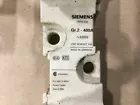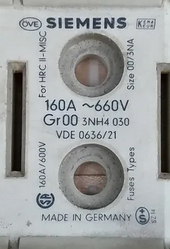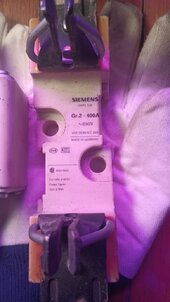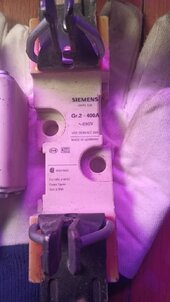michael d
off-grid solar pilgrim
What are NH Fuses? NH fuses (also known as NH Knife Blade Fuses or DIN NH Blade Fuses) were defined in the German DIN standard 43620 around 1944. They were primarily designed as general purpose fuses for the protection of conductors.
my question is: >>>> I purchased a 3 fuse holder that is rated at 160 amps made for the NH style fuse.... can these fuses be connected in parallel and if so does that effectively increase the amperage ability of each 160 amp NH fuse as a whole to 480 AMPS????
maybe a novice question but I would like to get a response... or at least get a discussion going as to why and why not
solar panels in parallel >>>> the amps add up
battery cells in parallel >>>> the amps add up
what about fuses in parallel????
the 355 amp NH style fuse I bought was huge and requires a much larger fuse holder >>> but the 160 Amp are physically smaller and I believe the same physical size as the 200 amp and 250 amp fuses in the NH style fuses I bought....
they are all Siemens brand NH fuses.... and all are rated for use with DC...
I have cnswipower 3200-watt and 6000-watt HF inverters in the 24-volt version that I am fusing.....presently w/o fuse externally to protect the wire >>> but presently only powering very light loads.
it may be in the forum someplace but I could not find the answer in another thread so I posted this one here about fuses in parallel ????
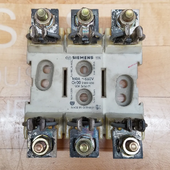
my question is: >>>> I purchased a 3 fuse holder that is rated at 160 amps made for the NH style fuse.... can these fuses be connected in parallel and if so does that effectively increase the amperage ability of each 160 amp NH fuse as a whole to 480 AMPS????
maybe a novice question but I would like to get a response... or at least get a discussion going as to why and why not
solar panels in parallel >>>> the amps add up
battery cells in parallel >>>> the amps add up
what about fuses in parallel????
the 355 amp NH style fuse I bought was huge and requires a much larger fuse holder >>> but the 160 Amp are physically smaller and I believe the same physical size as the 200 amp and 250 amp fuses in the NH style fuses I bought....
they are all Siemens brand NH fuses.... and all are rated for use with DC...
I have cnswipower 3200-watt and 6000-watt HF inverters in the 24-volt version that I am fusing.....presently w/o fuse externally to protect the wire >>> but presently only powering very light loads.
it may be in the forum someplace but I could not find the answer in another thread so I posted this one here about fuses in parallel ????




